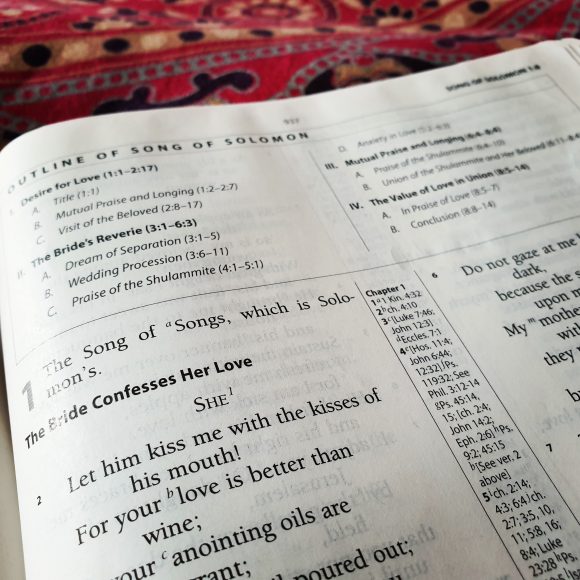The “lectio divina”(Latin) or “sacred reading” is the bread and butter of my time with the Lord. It is the method I use the most. Maybe it is because of its familiarity. Most Christians who are familiar with the Quiet Time would see its resemblance to the four movements of lectio divina. In the past, I have used the Daily Bread notes of Scripture Union with its similar READ, MEDITATE, APPLY, PRAY.
While READ, MEDITATE, and PRAY seems similar, the lectio divina is to be done in a different spirit. Maybe I did my Quiet Time wrongly, but I used to breeze through the suggested scripture readings, read the writer’s commentary, and pray a bit so I could say to myself that I have done my daily Quiet Time. The aim of lectio divina is not to gain Bible knowledge and information, or to consume spiritual growth vitamins, but to personally meet and commune with God and be loved and formed by Him.
The pace, attention, and intention are different. We read a passage of scripture slowly, unhurriedly, perhaps aloud, with pauses, and repeat the reading if necessary. We give attention to words, phrases, images that strike or impresses us. We attend to our responses to the scripture: the insights, feelings, memories, and strong reactions that arose. We ponder over what the Lord is stirring or inviting us to. We pray about what he is conveying to us. We pray about how to respond to him. It is more experiential than cerebral. It is more a communion with Christ then an analysis of scripture. At the end of it we feel like we have been with the Lord.
This practice can be seen as four movements or an intentional progressive process. We usually do all four “steps” in one session but we could also return to the same passage and focus on one of the separate “steps”.
LECTIO – READ
We begin with acknowledging our need of God’s presence with us. Then we read the scripture passage slower than usual, like reading a love letter, gently dancing with the words, noticing what resonates with us, holds our attention, or awakens our needs. We read it over and over. We notice the desert bush that burns, inviting us to draw closer.
He wakens me morning by morning, wakens my ear to listen like one being instructed (Isaiah 50:4b).
For a start, choose one of the gospels to meditate on. Do not bite off more than you can chew. The length should be in proportion to the time we have. In some Bibles, the passages are clearly divided with sub-headings like “The baptism of Jesus” or “The temptation of Jesus”.
MEDITATIO – MEDITATE
We zero in and ruminate over what resonates for us in the passage. We mutter the phrase or words pondering over what they mean for us. What is the Lord teaching or saying? Is he giving us input about what we are facing in life now? We let the Spirit impart his wisdom, love, peace and whatever graces we need.
We avoid analysing the text. We leave aside puzzling verses and maybe go to them after the meditation. For the purpose of lectio divina, research may lead us away from what we want.
Perhaps we record the verse, insight, direction or comfort we have received. (More about journaling in a future blogpost.)
ORATIO – PRAY
We converse with the Lord about our response to his word. We share our honest feelings about those matters that arose from our meditation. We wait in silence for his response since prayer is two-way. His response may come through our thoughts, or shifting of our desires and feelings about a matter, or an increase of faith, hope or love.
Sometimes prayer seem so effortless and other times so difficult and dry. We tell God how we feel even if we are feeling empty and faithless. We pray as a friend would converse with a friend.
CONTEMPLATIO – CONTEMPLATE
We rest in the quiet of his presence and let him love us. Like a little child, we simply lean and rest upon his shoulders and let him embrace us in silence. We soak in the healing love, peace and contentment that his presence brings.
End the time with a simple sincere prayer of thanks, or pray or sing “The Lord’s Prayer”.
(This method can also be used in a group setting, like my home church does in the Board of Elders meeting or in cell meetings. In these settings, the individuals share about what resonated with each of them, and end with prayer for one another or one person will conclude the session in prayer).
